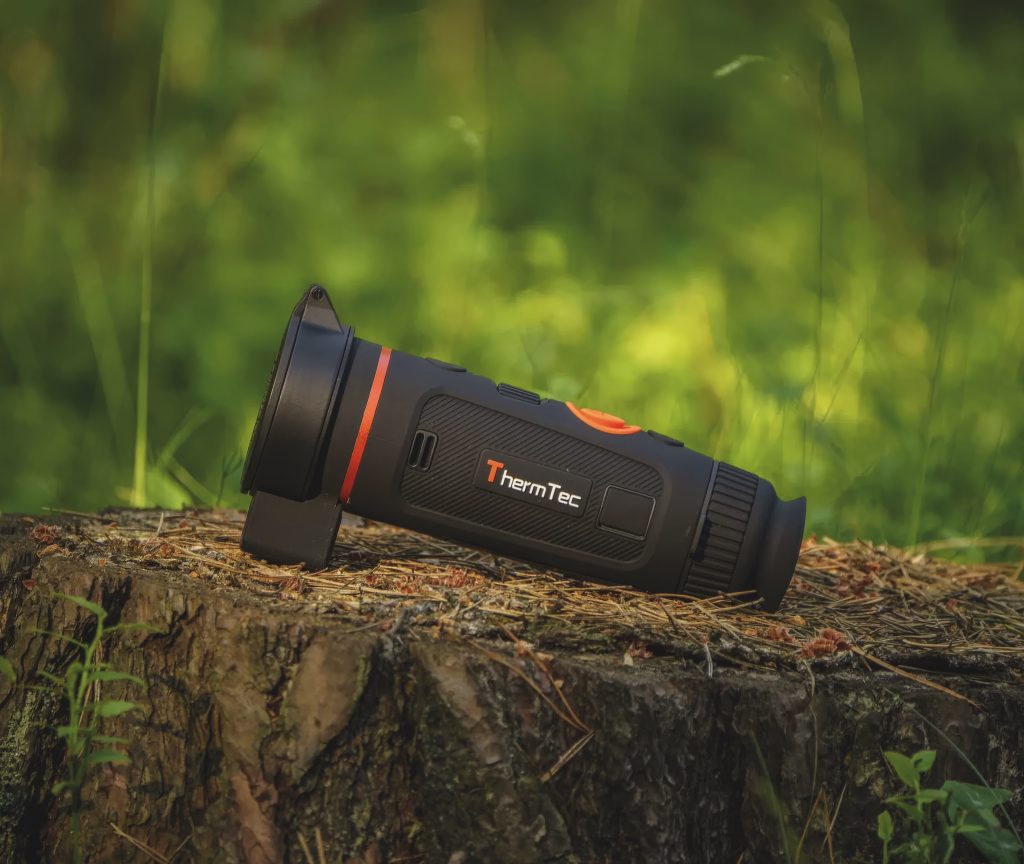Win CENS ProFlex DX5 earplugs worth £1,149 – enter here
Why there should be no snobbery about semi-automatics
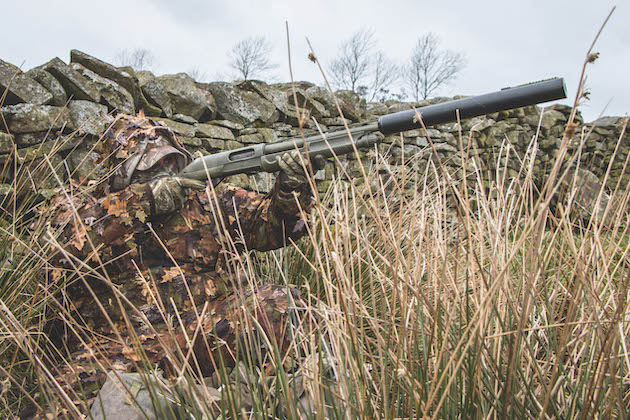 Tom
Tom
Semi-automatics are enduringly popular with the gun-buying public. For people coming into the sport of shooting, they tick many boxes.
Advantages of semi-automatics
They are relatively cheap, so first-time buyers are immediately drawn to the attractive price tag. Also, it should not be overlooked that the option of a third shot is a lure to newcomers. This is especially true in a pigeon hide, where many start on coming into the sport.
As we gain more experience, we discover that the third shot is rarely used other than in desperation, but it is part of human nature to automatically think three is better than two. Very few beginners can shoot a ‘threefer’ — three shots for three cleanly killed pigeons.
For gamekeepers, the semi-auto is often the tool of choice and extra shots can make the difference between downing the partridge-predating crow or not. Most semi-automatics are robust and up to taking the mud-spattering that comes with life across the handlebars of a quad bike.
Many keepers favour multi-shot semi-automatics that require a firearms certificate for fox drives in the spring as handling matters less on ground level. Running quarry and the number of cartridges expended in pursuit of the elusive fox isn’t a factor, as long as the fox is stopped. There’s no room for finesse in fox drives; it’s about getting the job done.
Ten-shot semi-autos are not best suited to flying quarry, as the point of balance changes with every shot. They are highly versatile guns and, with a few exceptions, parts tend to be cheap, which helps with affordability. They are also easy to fit together.
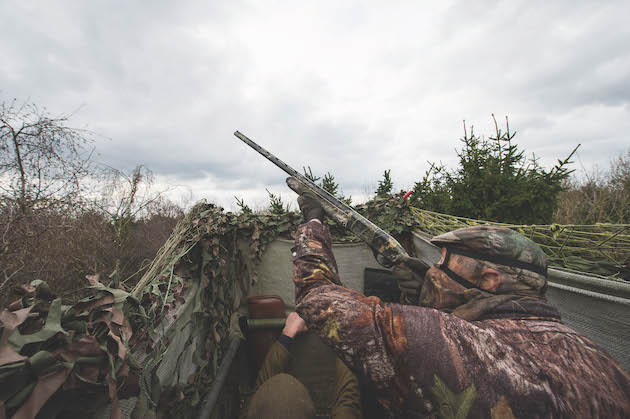
The ease of loading means semi-automatics can come into their own in a hide on a busy pigeon day
Semi-automatics generally fall into one of two categories: recoil-fed and gas-fed. Gas-fed semi-autos rely on the cartridge. When the cartridge is detonated, rapidly expanding gases drive the shot down the barrel at 900mph. Some of those gases are bled off through two small barrel ports that channel them to blow a piston back in the action. This forces the bolt back, ejects the fired case and reloads a new cartridge as it comes forward again. This is the reason that, typically, semi-automatics prefer heavier cartridges over lighter cartridges.
Some of the most popular gas-fed semi-automatics are the Beretta series, the most recent being the A400 in all its guises, the Browning Maxus, the Winchester SX3 — broadly similar to the Maxus — and the Fabarm XLR range.
A recoil-fed semi-automatic is a very clever design and does not use gases. Inside the bolt on the best-selling Benelli M2 is a relatively large coil spring. The head of the bolt rotates to lock into the breech. The main body of the bolt is floating and as the gun moves backwards through recoil, the spring is compressed by the bolt slamming into the back of the rotating bolt head that is moving to the rear with the rest of the gun.
The energy stored in the spring only releases when the first stage of the recoil is over. When it releases, the spring’s energy drives the bolt back, unlocking the rotating bolt head and all the other necessary steps in the cycle — ejection, recocking and reloading — take place. All of this happens in a fraction of a second.
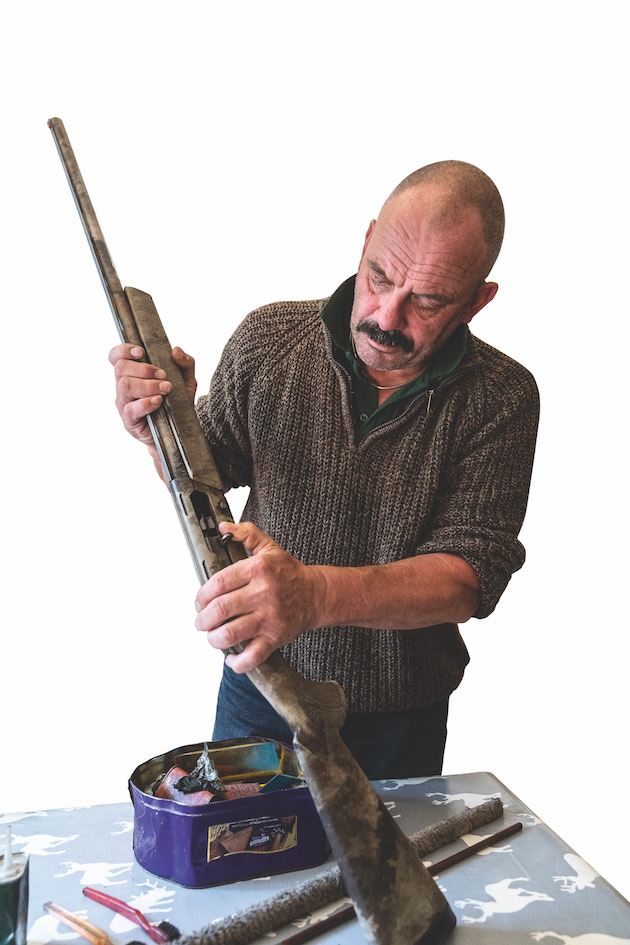
There is a happy medium to be found on cleaning semi-autos as overcleaning can be a problem
Both camps
Recoil-fed semi-autos include the Benelli series — Benelli designed the Inertia Driven system — and the Franchi Affinity 3. Interestingly, both companies are owned by the Beretta Holding Group, which also produces the eponymous A400 gas-fed gun. Cleverly, Beretta has a foot in both camps.
The popular Franchi Affinity 3 has the return spring in the fore-end, rather than the stock as in most other semi-autos. This allows for a much slimmer grip behind the trigger, but also makes the fore-end naturally more substantial, which is an asset. Benellis have a deliberately enlarged fore-end to make it more comfortable to grip. With gas-fed semi-autos, the working parts of the piston in the fore-end mean they have the opposite problem — sometimes they can feel a bit bulky in the front hand. Recoil-fed semi-autos must have a cartridge of sufficient weight to load up the recoil spring and 21g light loads will almost certainly not work. Both types of semi-automatic can be tuned to take a particular load but, as with all shotgun shooting, it’s best to find a cartridge you have confidence in and stick with it. Both styles usually come with stock shims that allow you to customise the gun fit to your needs.
Recoil-fed semi-autos don’t need much cleaning because none of the dirty gases are used to cycle the action, it all leaves the barrel. For this reason, they are popular working tools for gamekeepers, but they are not without their issues.
Having had several in my time, I found that when I placed the butt on the ground when crouching in a pigeon hide or a foreshore gutter, it was enough to disengage the rotating bolt head so the firing pin does not reach the primer. After walking miles, this is infuriating when your one chance at a goose sails past unsaluted.
I accept this was driver error, not the gun, and it can be rectified by pulling the bolt handle back to half recock and make sure the head is fully rotated in the breech, but it happened often enough for me to consider other options. Now you are aware of the issue, you can, of course, avoid it.
With fewer moving parts, recoil-fed semi-autos are arguably suited to the rigours of mud and sand that you find in a duck hide or on the saltings, though avoiding plugging your barrel into mud or snow is vital. It is harder to check it has no blockage.
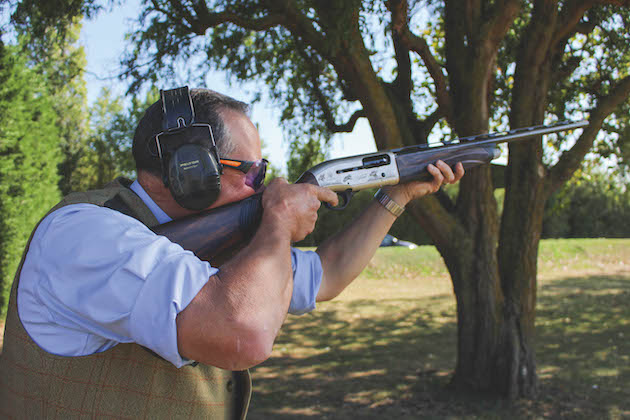
A semi-auto can be a popular choice for its recoil absorption properties
Reduced recoil
Gas-fed semi-autos need to be cleaned, but overcleaning can be an issue — there is a happy medium. However, the felt recoil is noticeably less than recoil-fed guns, which need to be firmly in the shoulder to work. In a future of big loads of steel shot, this will be a factor for some like me who find excessive recoil unpleasant.
There is a lot of unnecessary snobbery surrounding semi-autos, but if you understand how they operate, they can be the perfect tool for the job, especially if you loathe the idea of making your prized over-and-under or side-by-side work for a living.
You ought to be aware, though, that to match the overall length of more refined firearms in your cabinet, the length of the action on a semi-auto can make a 28in barrel feel like your 30in over-and-under and a 30in semi-auto is overall a very long gun.
Unloading a semi-auto safely is crucial and the best option on a Benelli or Browning Maxus is to press the magazine cut-off switch to the side and allow the magazine to empty one cartridge at a time, rather than racking the bolt to chamber them and then unload. This works differently on different models and if you are in any doubt about how they work, ask your local gun shop or gunsmith.
Barrel flags inserted in the chamber are often used on clay grounds to show the gun is empty, but many gamekeepers use a cartridge case in between the bolt face and the breech in the truck and in the field.
Pest control option
Is a semi-auto the right choice for you? If you are involved in any kind of pest control, they are certainly worthy of consideration. Older over-and-unders may not be proofed for high performance (HP) steel. Side-by-sides are almost certainly not, though both will take standard steel. The most effective loads with steel are HP and the most comfortable guns through which to use big loads of steel are semi-automatics, particularly gas- fed semi-autos.
The combination of a lightweight gun with the recoil absorption properties of the action means that the popularity of semi-autos will not diminish any time soon. Though some people regard it as heresy, I have no problem with someone using a semi-automatic at game as well as pigeon and wildfowl. It is discrimination based largely on prejudice and the accusations can easily be beaten back.
First, you don’t have to load the full three shots in your semi-auto, you can load two. You are therefore not ‘cheating’ or showing disrespect to a gamebird. Secondly, the accusation that they are unsafe as it’s not easy to see whether it is unloaded is curious, as almost everyone slips their gun at the end of a drive. Thirdly, that they are viewed as militaristic because of the synthetic stocks ignores the fact that almost every model is available in a wooden stock version.
Though considered ‘wrong’ for British game shooting — but not in the US, where they are often preferred — they come into their own in a hide, where ease of loading and the absorption of recoil on a busy pigeon day are a bonus. They might be a great all-rounder for effective steel shot in the future, but do please remember to pick up your empty cartridges.
Related Articles
Get the latest news delivered direct to your door
Subscribe to Shooting Times & Country
Discover the ultimate companion for field sports enthusiasts with Shooting Times & Country Magazine, the UK’s leading weekly publication that has been at the forefront of shooting culture since 1882. Subscribers gain access to expert tips, comprehensive gear reviews, seasonal advice and a vibrant community of like-minded shooters.
Save on shop price when you subscribe with weekly issues featuring in-depth articles on gundog training, exclusive member offers and access to the digital back issue library. A Shooting Times & Country subscription is more than a magazine, don’t just read about the countryside; immerse yourself in its most authoritative and engaging publication.







